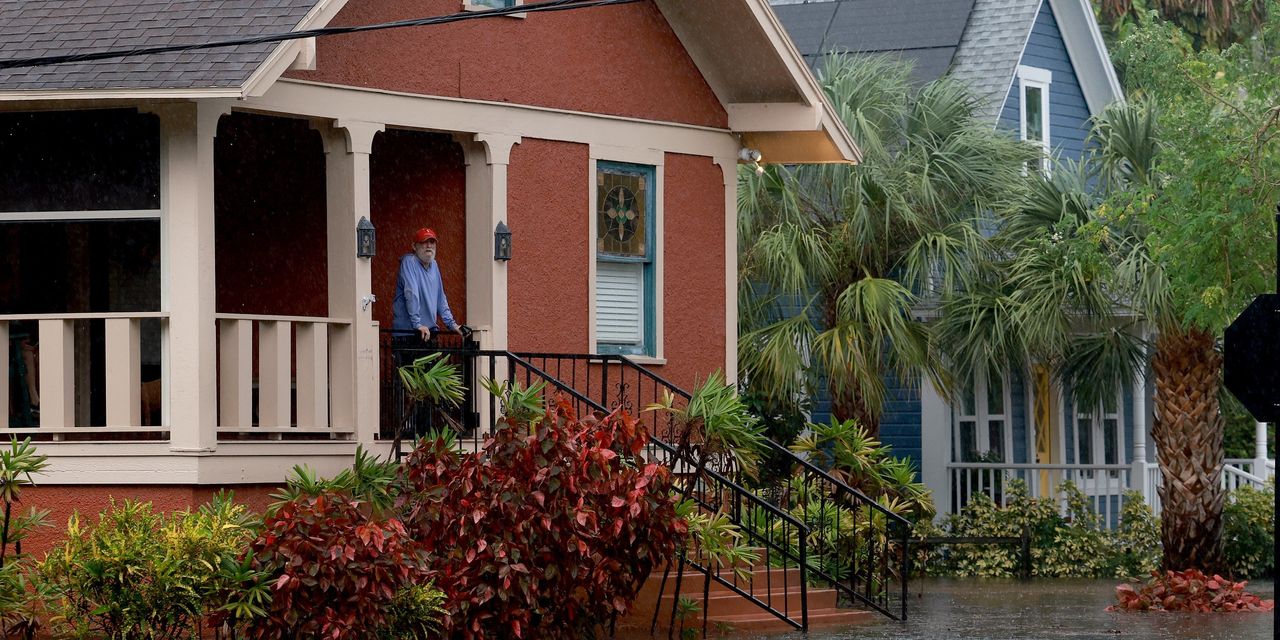The major federal flood-insurance program that covers millions of properties is set to expire by the end of this month. Experts expect Congress to reauthorize the program — but also question whether renewing what they call a flawed program will be enough to help homeowners.
The National Flood Insurance Program, or the NFIP, needs to be reauthorized by Congress by the end of September so that home buyers purchasing properties can close on their homes with new policies. Buyers who purchase properties with government-backed mortgages in high-risk flood zones are required to have flood insurance.
“I’d be shocked if they didn’t reauthorize it,” Daniel Schwarcz, a University of Minnesota law professor whose research focuses on insurance law and regulation, told MarketWatch. “Even though there have been some efforts to revitalize that private flood-insurance market, those have not really gone off particularly smoothly.”
“There’s still a lot of need for the program; a lot of people rely on it,” Schwarcz added. “So it would create a huge amount of problems if the government didn’t reauthorize it.”
In the “slim chance” that Congress lets the flood-insurance program expire, that would push homeowners to look at private insurers, and their costs could go up significantly, Jeremy Porter, the head of implications research for First Street Foundation, told MarketWatch.
The NFIP covers about 4.7 million properties, Porter said. There are 8 million properties across the U.S. in flood-risk zones that may rely on private flood coverage or lack any insurance, he added.
These properties are located near river channels, like the Mississippi River or the Ohio River, “that have a history of flooding, and where they’re relatively poor in terms of coverage, or are in areas that are impacted by precipitation flooding,” Porter explained.
With natural disasters fueled by climate change becoming more frequent, more homeowners face the risk of losing their homes. In California, for example, more than 1.2 million homes are at moderate or high risk of wildfire damage, according to CoreLogic. The company also estimated that more than 33 million homes in the U.S. are at risk for sustaining damage from hurricane-force winds, and have direct or indirect coastal exposure, which exposes them to storm-surge flooding.
Builders have reacted to the rising incidence of natural disasters wrecking homes by building stronger homes or retrofitting existing ones. For instance, some builders in flood-prone areas elevate a home by lifting the house and building a new foundation or extending an existing one below it, according to the Federal Emergency Management Agency.
Read: Why is flood insurance so expensive? Florida homeowners detail struggle with rising costs
‘The only game in town’
Congress created the NFIP decades ago through the National Flood Insurance Act of 1968. Homeowners have since come to rely on the NFIP — “the only game in town with regards to flood insurance,” Porter said.
The program was born out of necessity, as many private insurers over the years left the business of providing flood insurance, Schwarcz said. Floods affect many homeowners at once, he said, so insurers had to have enough funds to pay out in very extreme circumstances. The unpredictability of losses made it tough to offer coverage.
But the NFIP in its current form also has several issues: Putting aside how expensive the program is for taxpayers, the program is also undercharging some homeowners in terms of premiums, and also has issues with how reliably it maps flood risks.
“The problem is that the government’s terrible at setting premiums for risk,” Schwarcz said. “And in general, it’s hard to do … [but] you want premiums to reflect risks so that people have the proper incentives.”
A bipartisan group of New Jersey and Louisiana lawmakers in June introduced efforts to reform the NFIP, such as by boosting funding to help FEMA better map, identify and reduce flood risks; create oversight measures for insurers and vendors; and provide FEMA with more authority to sever ties with contractors that abuse the system.
For its part, FEMA has launched a new “Risk Rating 2.0” methodology to better assess the likelihood of a property flooding, and premiums have increased as a result, according to a Government Accountability Office analysis.
But the new methodology has met with considerable resistance: Under Risk Rating 2.0, homeowners in parts of southern Louisiana are slated to see some steep premium hikes. One ZIP code was projected to see a 752% hike under Risk Rating 2.0, prompting one southern Louisiana parish to sue FEMA along with nine other states and other local Louisiana entities. The other states are Florida, Idaho, Kentucky, Mississippi, Montana, North Dakota, South Carolina, Texas and Virginia.
Officials told a federal judge on Thursday that the increase in premiums is already leading people to renege on home purchases and will likely lead to an exodus of people and businesses leaving south Louisiana, the Associated Press reported.
Nonetheless, the new methodology still results in NFIP premiums falling below what a private insurer would need to charge to be profitable, the GAO added, as there are statutory limits on premium increases for policyholders at no more than 18% per year. The lawmakers are also proposing the cap on annual premium hikes to be just 9%.
Experts — and the GAO — say the caps are counterproductive.
“Frankly, flood insurance should be super expensive,” Schwarcz said — or, in other words, in line with more accurate pricing. “People are just hoping the government will bail them out. … [But] we’re getting to the point where we can say with near certainty that a lot of coastal properties are going to face massive, [massively] increased flooding risk in the near future.”
Read: What makes flash floods so dangerous? Here’s how to protect yourself.
Read the full article here













Leave a Reply